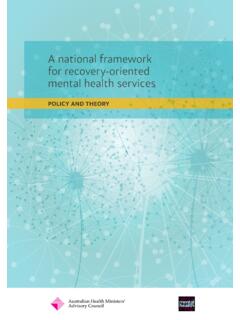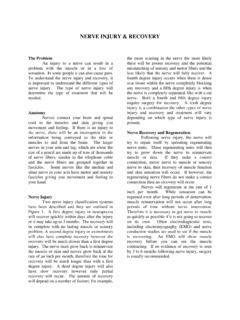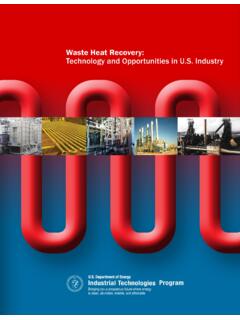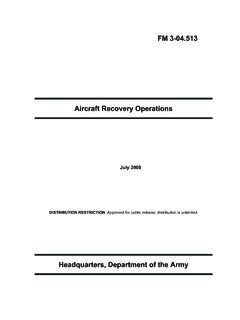Transcription of PERSONNEL RECOVERY OPERATIONS
1 PERSONNEL RECOVERY OPERATIONS Air Force Doctrine Document 3-50 1 June 2005 Interim Change 2 (Last Review), 1 November 2011 This document complements related discussion found in joint publication 3-50 series. BY ORDER OF THE AIR FORCE DOCTRINE DOCUMENT 3-50 SECRETARY OF THE AIR FORCE 1 JUNE 2005 INCORPORATING INTERIM CHANGE 2, 1 NOVEMBER 2011 SUMMARY OF CHANGES The Air Force Doctrine Working Group has reviewed this document and recommended that it remains valid and will again be reviewed no later than April 2013. This Interim change to Air Force Doctrine Document (AFDD) changes the cover to AFDD 3-50, PERSONNEL RECOVERY OPERATIONS to reflect revised AFI 10-1301, Air Force Doctrine (9 August 2010). AFDD numbering has changed to correspond with the joint doctrine publication numbering architecture. AFDD titles and content remain unchanged until updated in the next full revision. A margin bar indicates newly revised material.
2 Supersedes: AFDD , 15 July 2000 OPR: LeMay Center/DD Certified by: LeMay Center/DD Pages: 41 Accessibility: Available on the e-publishing website at for downloading Releasability: There are no releasability restrictions on this publication Approved by: LeMay Center/CC, Maj Gen Thomas K. Andersen, USAF Commander, LeMay Center for Doctrine Development and Education Old Number New Number Title AFDD 2-1 changed to AFDD 3-1 Air Warfare AFDD changed to AFDD 3-01 Counterair OPERATIONS AFDD changed to AFDD 3-70 Strategic Attack AFDD changed to AFDD 3-03 Counterland OPERATIONS AFDD changed to AFDD 3-04 Countersea OPERATIONS AFDD changed to AFDD 3-50 PERSONNEL RECOVERY OPERATIONS AFDD changed to AFDD 3-52 Airspace Control AFDD changed to AFDD 3-40 Counter-CBRN AFDD changed to AFDD 3-60 Targeting AFDD 2-10 changed to AFDD 3-27 Homeland OPERATIONS AFDD 2-12 changed to AFDD 3-72 Nuclear OPERATIONS AFDD 2-2 changed to AFDD 3-14 Space OPERATIONS AFDD changed to AFDD Counterspace OPERATIONS AFDD 2-3 changed to AFDD 3-24 Irregular Warfare AFDD changed to AFDD 3-22 Foreign Internal Defense AFDD 2-4 changed to AFDD 4-0 Combat Support AFDD changed to AFDD 3-10 Force Protection AFDD changed to AFDD 4-02
3 Health Services AFDD changed to AFDD 4-11 Bases, [Rescinded] AFDD changed to AFDD 1-04 Legal Support AFDD 2-5 changed to AFDD 3-13 Information OPERATIONS AFDD changed to AFDD Electronic Warfare AFDD changed to AFDD 3-61 Public Affairs OPERATIONS AFDD 2-6 changed to AFDD 3-17 Air Mobility OPERATIONS AFDD 2-7 changed to AFDD 3-05 Special OPERATIONS AFDD 2-8 changed to AFDD 6-0 Command and Control AFDD 2-9 changed to AFDD 2-0 ISR OPERATIONS AFDD changed to AFDD 3-59 Weather OPERATIONS iiiFOREWORD Throughout their history, America s armed forces have maintained a commitment to recover any isolated PERSONNEL from hostile or uncertain environments, and denied areas. But until recently, each Service tackled the PERSONNEL RECOVERY conundrum unilaterally. For example, the last edition of this document focused on combat search and rescue the Air Force s mechanism for the RECOVERY of Airmen. Experiences during OPERATIONS ENDURING FREEDOM and IRAQI FREEDOM, as well as lessons learned and relearned since the demise of the Soviet Union suggest that each Service must do a better job of integrating doctrine, tactics, techniques, and procedures.
4 In order to clarify each Service s responsibilities, with regard to PERSONNEL RECOVERY , the Chairman of the joint Chiefs of Staff established a new directive in July 2004. With joint publication 3-50, joint Doctrine for PERSONNEL RECOVERY , still in draft form, the Chairman of the joint Chiefs of Staff Instruction outlines the Department of Defense s PERSONNEL RECOVERY concept and serves as a starting point for this document. Based on this and other guidance, each Service has had to reconsider the doctrine that outlines how each organizes, trains, and equips forces capable of providing an integrated joint capability to Combatant Commanders. Air Force Doctrine Document (AFDD) , PERSONNEL RECOVERY OPERATIONS , establishes the Air Force s perspective on the joint PR construct. It shifts focus from the rescue of aircrews to the RECOVERY of any isolated PERSONNEL . Although the Air Force has always been committed to the RECOVERY of any isolated PERSONNEL , previous AFDDs have overly focused on the rescue of aircrews.
5 While the Air Force will continue to maintain its natural emphasis on the RECOVERY of Airmen, this AFDD refines our doctrinal sight picture and affirms that Air Force PERSONNEL RECOVERY forces remain committed to the RECOVERY of any isolated PERSONNEL . BENTLEY B. RAYBURN Major General, USAF Commander, Headquarters Air Force Doctrine Center ivTABLE OF CONTENTS INTRODUCTION .. vi FOUNDATIONAL DOCTRINE STATEMENTS .. viii CHAPTER ONE Overview .. 1 Historical Perspective .. 2 Missions .. 3 Combat Search and 3 PRO Philosophy and CHAPTER TWO PERSONNEL RECOVERY Essential Tasks .. 5 Overview of the joint PERSONNEL RECOVERY 5 joint PERSONNEL RECOVERY Center ..6 The Five PERSONNEL RECOVERY OPERATIONS (PRO) Essential Tasks .. 6 6 7 Support .. 7 Recover .. 7 Reintegrate .. 8 CHAPTER THREE Air Force Combat Search And Rescue (CSAR): The RECOVERY Mechanism ..10 CSAR Components .. 11 Command, Control, and 11 PERSONNEL RECOVERY Coordination Cell (PRCC).
6 11 Director, PERSONNEL RECOVERY Coordination Cell .. 12 PERSONNEL RECOVERY Plans Officer .. 12 PERSONNEL RECOVERY Duty Officer .. 12 RECOVERY Forces .. 12 PRO Dedicated Forces .. 13 Additional Augmenting Assets .. 15 Isolated PERSONNEL .. 16 CHAPTER FOUR PRO Planning and Mobility Support Considerations .. 17 Planning Support Considerations .. 17 General Planning 17 Communications .. 18 18 Security .. 19 Information OPERATIONS ..19 Medical .. 20 Space 20 Weather, Illumination, and Topological Considerations .. 20 Mobility Support 20 21 Operating 21 vCHAPTER FIVE Training and 23 23 Commanders and 23 PRO Forces .. 23 Isolated PERSONNEL .. 23 PERSONNEL RECOVERY Coordination Cell 24 Exercises .. 24 Suggested Readings .. 25 Glossary .. 28 viINTRODUCTION PURPOSE Air Force Doctrine Document (AFDD) , PERSONNEL RECOVERY OPERATIONS (PRO), contains the operational-level Air Force views on the Department of Defense s PERSONNEL RECOVERY (PR) system.
7 It expounds on AFDD 1, Air Force Basic Doctrine, and basic air warfare doctrine contained in AFDD 2-1, Air Warfare. Additionally, it establishes the Air Force s viewpoint of the joint PR system. It supersedes AFDD , dated 15 July 2000. APPLICATION This AFDD applies to all Airmen. Collectively, the term Airman refers to all active duty, Air Force Reserve, Air National Guard, and civilian Air Force PERSONNEL . The doctrine in this document is authoritative, but not directive. Therefore, commanders need to consider the contents of this AFDD and the particular situation when accomplishing their missions. Airmen should read it, discuss it, and practice it. SCOPE This document establishes the roles and responsibilities of Air Force PERSONNEL supporting PERSONNEL RECOVERY OPERATIONS and outlines the principles for planning and executing such missions in support of theater campaign objectives. It describes the mission, command relationships, force composition, and planning considerations necessary to conduct OPERATIONS .
8 It covers basic PRO organization, capabilities, procedures, and the Airman s perspective on joint PR responsibilities. It also discusses the relationship between the Air Force PRO organizations, under the operational control of the commander, Air Force forces (COMAFFOR), and the joint PR agencies. Ultimately, the JFC and component commanders (Service and functional components) must know and understand their PR duties/responsibilities within the military option of PR. Additionally, they must be able to integrate the military option of PR with the diplomatic and civil options of PR so as to maximize the synergy of an integrated and coordinated PR plan. Commanders must assess each situation independently, consider all PR alternatives, and determine the option best suited to respond to the isolating incident. Due to the vast scope of PR, this document will focus on the Air Force s contribution to the military option of PR.
9 Those who are possessed of a definitive body of doctrine and of deeply rooted convictions upon it will be in a much better position to deal with the shifts and surprises of daily affairs than those who are merely taking short Winston Churchill viiCOMAFFOR / JFACC / CFACC A note on terminology One of the cornerstones of Air Force doctrine is the US Air Force prefers and in fact, plans and trains to employ through a COMAFFOR who is also dual-hatted as a JFACC. (AFDD 1) To simplify the use of nomenclature, Air Force doctrine documents will assume the above case unless specifically stated otherwise. The term commander, Air Force forces (COMAFFOR) refers to the Title 10 Service responsibilities while the term joint force air and space component commander (JFACC) refers to the joint operational responsibilities. While both joint and Air Force doctrine state that one individual will normally be dual-hatted as COMAFFOR and JFACC, the two responsibilities are different, and are typically executed through different staffs.
10 Normally, the COMAFFOR function executes operational control/administrative control of Air Force forces through a Service A-Staff while the JFACC function executes tactical control of all joint air and space component forces through an air and space OPERATIONS center. When multinational OPERATIONS are involved the JFACC becomes a combined forces air and space component commander (CFACC). Likewise, though commonly referred to as an air and space OPERATIONS center (AOC), in joint or combined OPERATIONS the correct title is joint air and space OPERATIONS center (JAOC) or combined air OPERATIONS center (CAOC). viiiFOUNDATIONAL DOCTRINE STATEMENTS Foundational doctrine statements are the basic principles and beliefs upon which AFDDs are built. Other information in the AFDDs expands on or supports these statements. Air Force PERSONNEL RECOVERY OPERATIONS (PRO) reflect a number of specific tasks performed by Air Force units to recover isolated PERSONNEL throughout the entire spectrum of conflict.
















